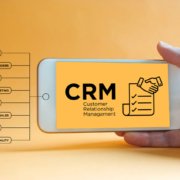Senior Living Marketing – 5 Ways To Roll Out Red Carpet Customer Service
So, you got the deposit check! Yes! Congratulations. Your sales process for this prospect has come to a close.
Or has it?
Make no mistake, the real sale begins after you collect the check.
You may have (or be) an amazing salesperson who brings in new residents right and left. If you do, bravo! Now’s the time for you to decide: Is it uphill or downhill from here? As Don Draper in the television show, Mad Men puts it, “The day you sign the client is the day you start losing them.”
It’s now up to you and your entire team to turn this new resident into a raving fan and referral source for your community. There’s a link between sales and service. When you roll out the red carpet for your customers, they run out and tell everyone they know.
Here are five ways you can deliver a red carpet experience, excerpted from the book, 501 Ways to Roll Out the Red Carpet for Your Customers.
- Get Red Carpet Ready. How do you get hourly workers to deliver red-carpet service if they’ve never received red-carpet service? You must model it for them and you must set up a structure that supports them in their service efforts. Be very clear about what your service standards are and give people the training and the tools they need to act on them. Refrain from assuming that customer service is common sense. As one participant told me after a recent training program, “These are not skills I learned at home. So, when they tell me I have to improve my hospitality skills, but don’t train me, I don’t know what to do. Thanks to your training, I now know what to do differently.” WOW! You can’t expect people to deliver on expectations they don’t know you have, or standards you haven’t trained them on.
Get Red-Carpet Ready by defining your service standards and providing your team with training.
- Make Red-Carpet First and Last Impressions. You want to have them at hello and Give your team training on hospitality skills, and your entire front line team turns into an integral part of your sales force. Ed Eynon, VP of Human Resources for KSL Resorts, suggests the following behaviors:
- Smile, make eye contact and greet people warmly before they greet you.
- Open doors for guests and residents.
- Learn to read people who look lost so you can assist them.
- Use their name.
- Always ask, “While I’m here, is there anything else I can do for you?”
Remember the telephone is often where that first impression is made. Make sure everyone who answers the phone knows how to do so in a professional, upbeat manner. Make sure there is someone knowledgeable to answer the phone. It’s frustrating to check on a parent in your community or facility and hear the phone ring and ring.
The last impression is important, too. Send guests home with an invitation to come back. Follow up to ensure a problem was resolved. Or send someone a handwritten thank-you note. Or stay in touch after someone’s parent has passed away.
- Make “Movie Moments.” There are moments in the best movies that we always remember: when Sandy and Danny drove off in Greased Lightning when Rocky Balboa ran up the steps of the Philadelphia Art Museum, and when Luke learned the identity of his real father in Star Wars. These are moments that take us by surprise. They delight us and cause an emotional reaction so strong that we just have to talk about them.
Empower your team to create “Movie Moments” for your residents and other customers. For instance, one of the many Movie Moments the team at Mather LifeWays creates for their new residents is to have their favorite song playing in their new apartment the first time they walk in. What unique red carpet experiences could you create to WOW your new resident when they move into your community?
- Cut! Take-Two. Strive for flawless service, but give your people the tools they need to recover when human mistakes happen. Recover with style by TREATing upset customers to red-carpet service.
- Tune In and Listen
- Respond with Empathy and Regret
- Explore Solutions and Fix the Issue
- Add a little Extra
- Thank the Customer
Report frequent occurrences to a manager. If you keep hearing the same complaints repeatedly, it means that something needs to be fixed.
- Give Standing Ovations to Your Staff: Richard Branson, the founder of the Virgin Group, says, “Train people well enough that they can leave, but treat them well enough they don’t want to.” Your staff needs a little star treatment too! Dawn Winder, community director for the Allegro at Tarpon Springs, recently put her leadership team through my “21 Days of Thank You” exercise. Every day, for 21 consecutive workdays, they intentionally showed appreciation to staff members. “We’re having a great time,” she said, “and the team building is an added bonus!”
There’s never been a better time than now to focus on improving the customer experience. Your residents and other customers have more choices and louder voices than ever before. Make sure they are choosing you and bringing friends by rolling out the red carpet for them in the new year!
Donna Cutting, CSP is the author of two books on customer service, including the recently released 501 Ways to Roll Out the Red Carpet for Your Customers: Easy to Implement Ideas to Inspire Loyalty, Get New Customers and Leave a Lasting Impression. She and her team work with senior living organizations to turn their team into an integral part of their sales force through the delivery of red-carpet customer service. Learn more here »








